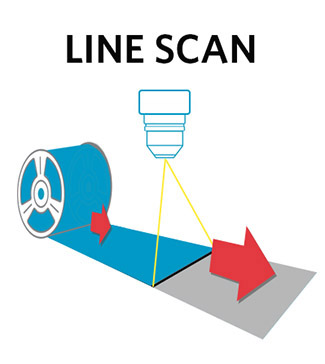
A line-scan sensor is a specialized technology that uses a row of sensors to capture a digital image in one-pixel “slices” taken in rapid succession. This requires that either the sensor be moving past the subject, or the subject be moving past the sensor. When the capture is complete, the slices are reconstituted into a 2D image. This is in contrast with area scan, or area array, cameras, which take photos of a whole 2D area all at once.
Line-scan technology is widely used in scanners, because it is especially suited for taking images of moving objects. Check scanners employ a special kind of line-scan device known as a contact image sensor.
While line-scan sensors are sometimes referred to as “cameras” because they are used to capture images, they are actually a very different type of technology from traditional cameras. Nearly any camera used in everyday photography would be an area-array camera, whereas line-scan sensors tend to be used more for office and industrial tasks, and are not interchangeable.
For a more complete comparison of line-scan and area-array technology, see our article on the subject here.





